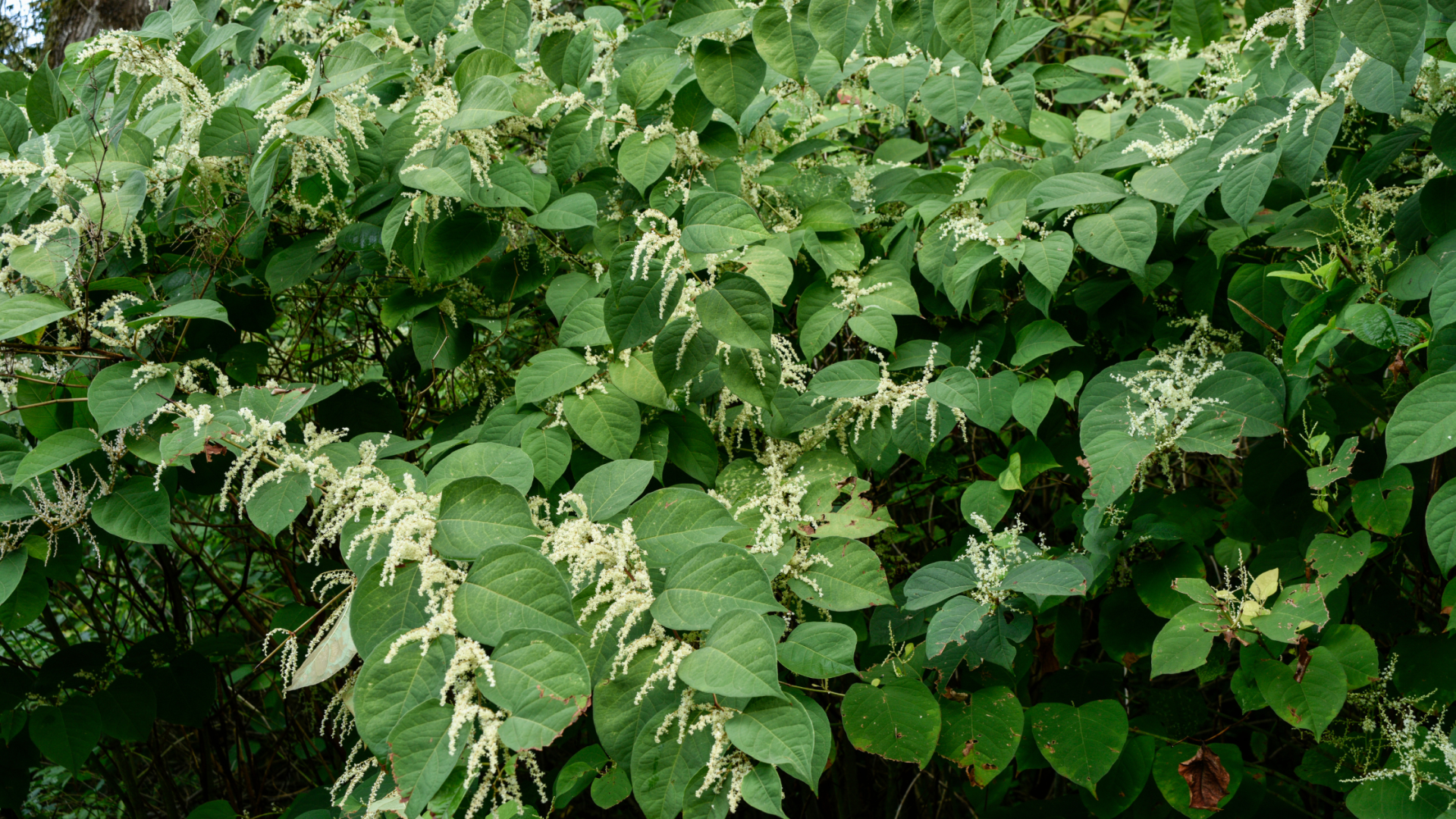Although far from offensive to look at and a fairly inconspicuous inhabitant of some British gardens, the mere mention of Japanese Knotweed has the potential to instil fear among property buyers and sellers.
This fear ‘stems’ from its ability, at its worst, to exploit structural weaknesses, often forcing its way into a building’s foundations, as well pushing through paved areas and making cracks worse. The other worry is there is no effective cure for Japanese knotweed. Around 5% of properties are affected or at risk and the presence of the plant can devalue a home by as much as 15%, depending on the severity.
Since 2016, cases of Japanese knotweed have increased by 28%, with West Sussex being one of the worst affected areas. And this pretty horticultural pest made headlines again recently in a legal case that resulted in the original vendor having to pay out over £100,000 in compensation and legal fees because of misrepresentation at sale.
But it’s ‘knot’ all bad news. The spread of Japanese knotweed is, in fact, forcing the property sector to take a more balanced approach, with new guidance suggesting that it’s no longer a death sentence for affected owners.
Selling a property with Japanese knotweed
You are legally required to disclose whether you have ever known there to be Japanese knotweed within 7 metres of your home (currently), or within 3 metres of your property if it’s the plant’s roots. This information is requested on the TA6 property information form, which is completed during the sales process. If you are unsure about the presence of Japanese knotweed, it’s highly recommended to get a survey conducted beforehand, which can cost between £200 and £500 – a small price to pay in comparison to court proceedings or loss in sale value.
Such a survey will grade the severity of any infestation and will also suggest a treatment or eradication plan. This often takes several years to complete but if steps have already been taken to control it and this can be proved, you can usually progress with your property sale.
The cost of treatment will depend on many factors but if carried out by an insurance-backed and specialist contractor, it’s increasingly the case that the property will retain much of its value and be mortgageable from a lender’s perspective.
According to the Japanese Knotweed Agency, a ‘typical semi-detached property with an infestation in the rear garden in several places could cost between £3,000 and £5,000 for a full treatment and monitoring plan, and an insurance-backed guarantee’.
The most important thing for a property owner is to be honest. Not only will doing so ensure your property is valued correctly at the start but it will sit well with buyers and potentially avoid legal action after a sale has completed.
Buying a property with Japanese knotweed
It goes without saying that any buyer of a property should have thorough due diligence carried out on the property in the form of a survey. As mentioned above, you can also pay to get a specific Japanese knotweed survey completed and this is a good idea if you suspect the property you are buying may be affected, or if the seller is unsure over whether the plant has ever been present.
If, however, you think you’ve found your dream home and Japanese knotweed is growing, do not despair! Provided the vendor has been honest and a course of treatment or eradication is in place, you could grab yourself your ideal property for less. Although the impact on value can be mitigated, the property will still likely be valued at a lower price than a comparable property in the same road without Japanese knotweed.
The lending criteria on such properties is evolving too and it’s no longer a black and white yes or no. In March 2023, proposals by the Royal Institute of Chartered Surveyors (RICS) are due to come into force that also promote a more lenient approach because of an increased understanding of Japanese knotweed.
The White & Brooks team is happy to help you with the sale or purchase of property in Chichester and Bognor Regis – Japanese knotweed or ‘knot’. Give your local branch a call today.


 By
By 



Share this with
Email
Facebook
Messenger
Twitter
Pinterest
LinkedIn
Copy this link